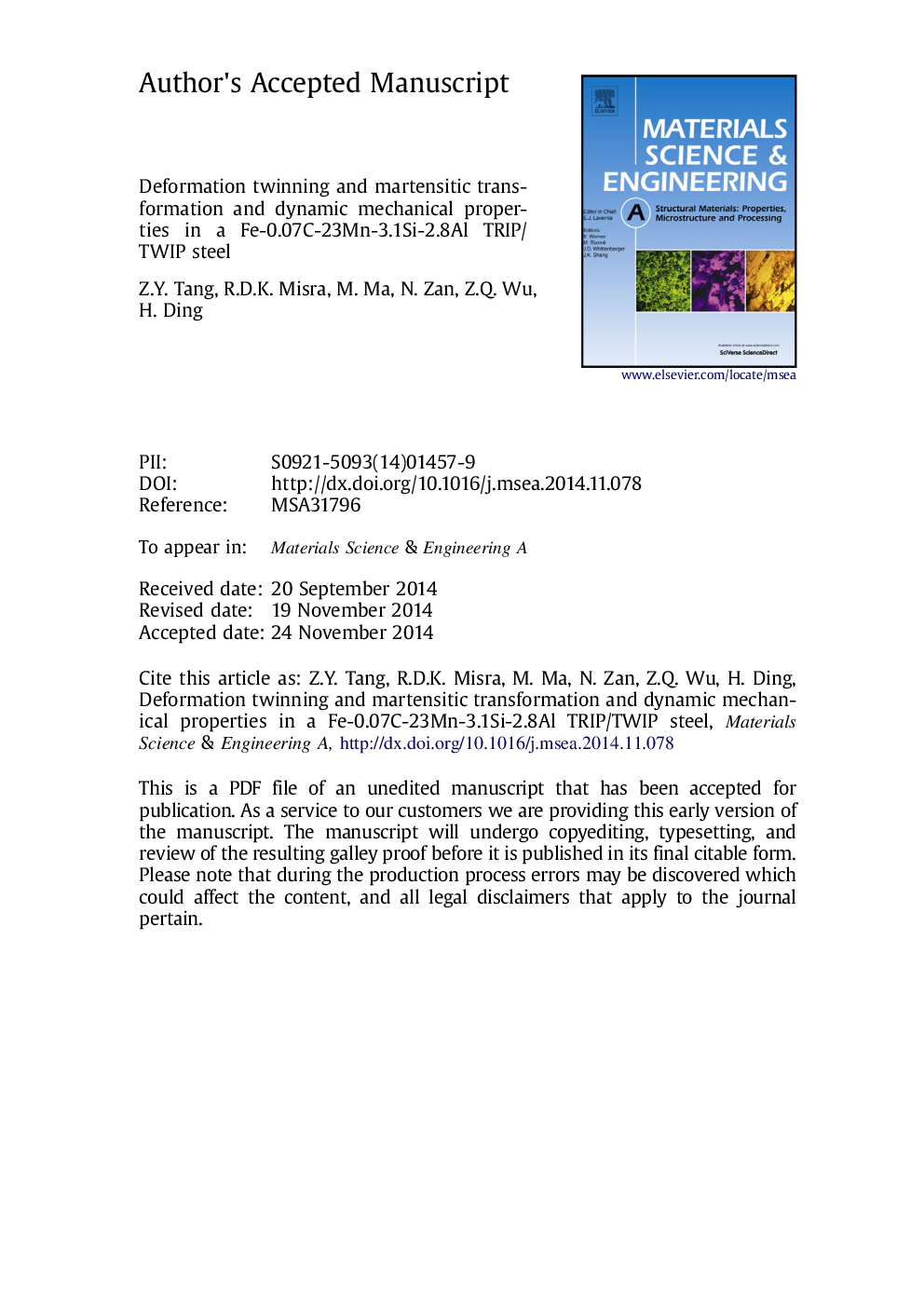| Article ID | Journal | Published Year | Pages | File Type |
|---|---|---|---|---|
| 7979186 | Materials Science and Engineering: A | 2015 | 25 Pages |
Abstract
In the study described here, we have explored the evolution of microstructure and mechanical properties in Fe-0.07C-23Mn-3.1Si-2.8Al steel with a stacking fault energy (SFE) in the intermediate range of 15-20 mJ mâ2 during dynamic deformation and in the strain rate range of 101-103 sâ1. The results showed that the transformation induced plasticity (TRIP) effect and twinning induced plasticity (TWIP) effect coexist during dynamic deformation. The mode of austenite-to-martensite transformation is γâε, εâαâ². With increase in the strain rate, the volume fraction intermediate ε-martensite was increased and αâ²-martensite remained nearly constant, and the frequency of the intersecting deformation twins was also increased. This behavior of steel was responsible for a good combination of ultimate tensile strength of 913 MPa and total elongation of 75.4% at a strain rate of 103 sâ1. The strength and elongation increased significantly with an increase in strain rate in the range of 101-103 sâ1. The dominant plasticity enhancing mechanisms with increase in strain rate were strain-induced intermediate ε-martensite and intersecting deformation twins.
Keywords
Related Topics
Physical Sciences and Engineering
Materials Science
Materials Science (General)
Authors
Z.Y. Tang, R.D.K. Misra, M. Ma, N. Zan, Z.Q. Wu, H. Ding,
